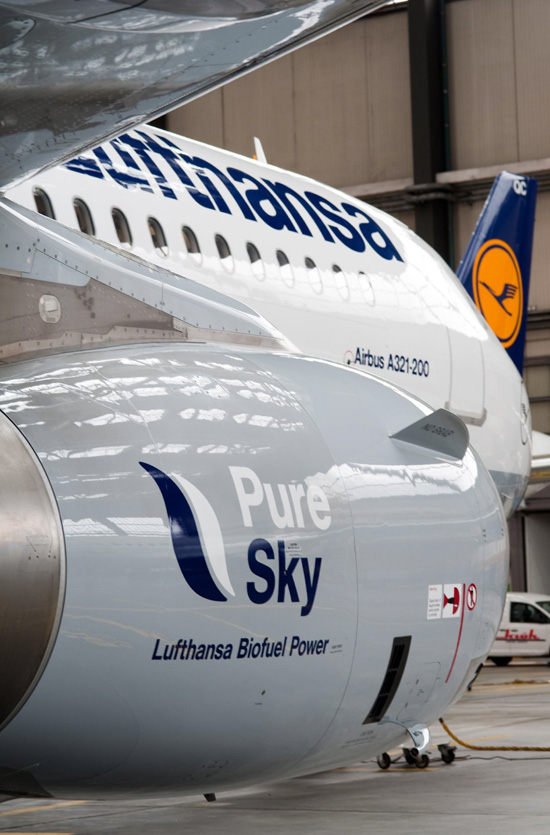The Bind of Bio-fuels
The Lufthansa trials highlight a problem posed by bio-fuels generally: They’re not available yet in sufficient quantity or at an affordable price
![]()

Lufthansa tested biofuel in this Airbus A321, operating one engine on Jet A and the other on a 50-percent blend of Jet A and a fuel made from processed plant and animal-fat hydrocarbons.
Jet A, the fuel that civil jets use (the military’s are designated JP), comes from crude oil that’s been distilled and standardized to meet a chemical specification. While many turbines can run on almost any light oil or liquid hydrocarbon, jet aircraft fly very high where it’s cold, and Jet A has to resist solidifying up there in the stratosphere, among other requirements.
In recent years, synthetic jet fuels have been created by processing coal and by using biological methods, which produce so-called “bio-fuel.” Although crude oil – petroleum – technically comes from plants, the crude was formed eons ago, and is considered “fossil fuel.” The first bio-fuel to appear in quantity, and the most common one available to consumers, is a blend of gasoline and ethanol in various proportions. The ethanol is made by fermenting the sugars in corn, cane or sugar beets. Ethanol reduces the energy density of the blends compared to gasoline, and researchers are looking for ways to produce butanol instead, because it has better energy density.
Synthetic bio-jet fuel has to closely resemble kerosene and Jet A in its energy density and other properties, and small quantities have been made to be blended with traditional fuels – with some success. Lufthansa recently completed trials using some bio-jet fuel in a roughly 50 percent mix with standard Jet A. But the reason Lufthansa halted the trials highlights a problem posed by bio-fuels generally: They’re not available yet in sufficient quantity or at an affordable price.
Doing demonstrations is one thing; operating large fleets of airliners using even a modest blend of bio-fuel and Jet A will require enormous capital investment in an infrastructure that can produce the fuel. Algae-based oils from bioengineered plant cells, for example, would require huge quantities of water and tanks in which to hold the algae. Right now, the energy it takes to produce biofuels usually exceeds the energy yield. Petroleum flows out of wells and through pipes to refineries, and while the price of oil occasionally spikes in response to market demands, the actual cost of producing it will probably continue to undercut the cost of making fuels from renewable sources. Nonetheless, the U.S. Air Force continues to pursue synthetic fuels to ensure it can continue to operate if crude oil were to be unobtainable.